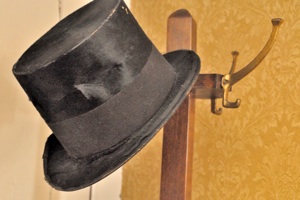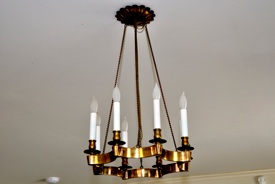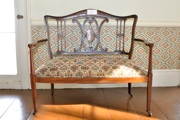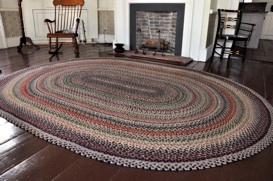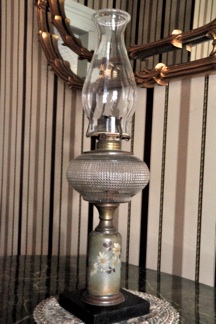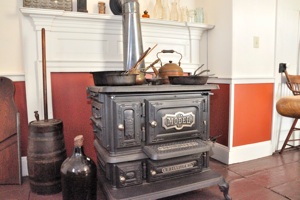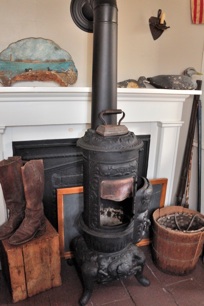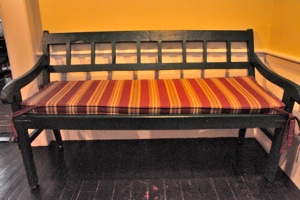Cooking was a full time job.
The wood burning stove had to be started at least an hour before any cooking could proceed.
Water came from the hand pump and was carried in large pots from the pump to stove for all hot water needs.
Bread and cakes were made by hand on the baker’s table and baked inside the stove.
Many of today’s appliances are missing in the kitchen.
We don’t see an ice box because that was usually kept on the rear porch. Each day the iceman came with his ice-wagon, cut a piece of ice to fit your ice box and deliver it without ever entering the kitchen.
The Store
Nathaniel Conklin did not include a store in the plans for his house. But after the house was sold to T. Platt Carll in 1821 and after Mrs. Carll was widowed, she converted one room to a store. This was not unusual. Typically, Mrs. Carll carried baked goods from her kitchen and vegetables from her own garden.
Groceries then were not boxed and packaged. They were delivered in large barrels or wood boxes, sometimes in decorated tins. Food items were weighed on a scale or measured. They were wrapped in brown paper or funneled into brown paper bags.
A general store carried everything from shoes and aprons to bread and vegetables. In many ways, it was the precursor of the department store. Mrs. Carll closed her store in 1869 when she moved to New York City.



The Gathering Room
Built in 1871, this room was added to the original construction when the house became part of the Washington Hotel complex. It was likely used for small meetings or events and later used as a dining room during the boarding house era of the house.
